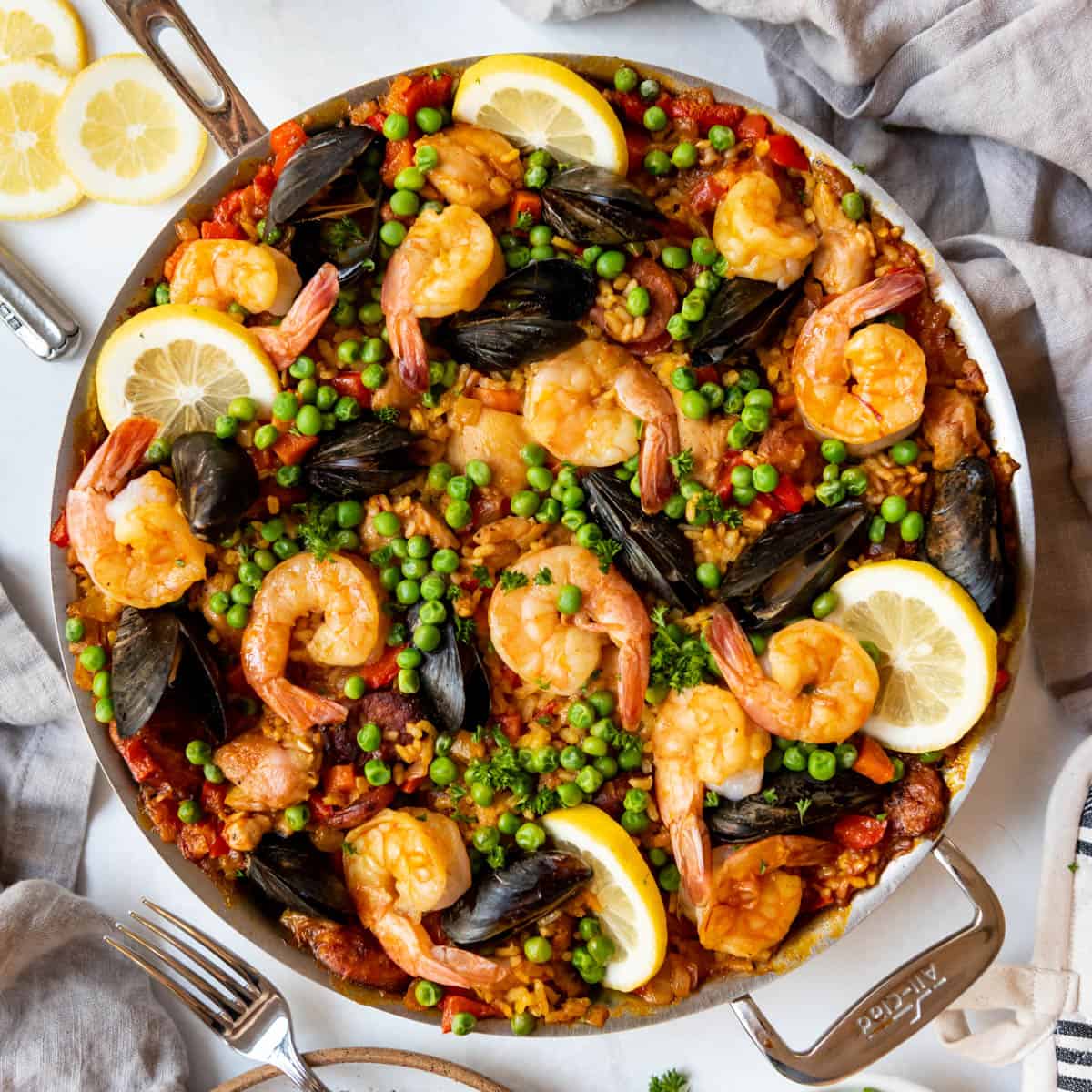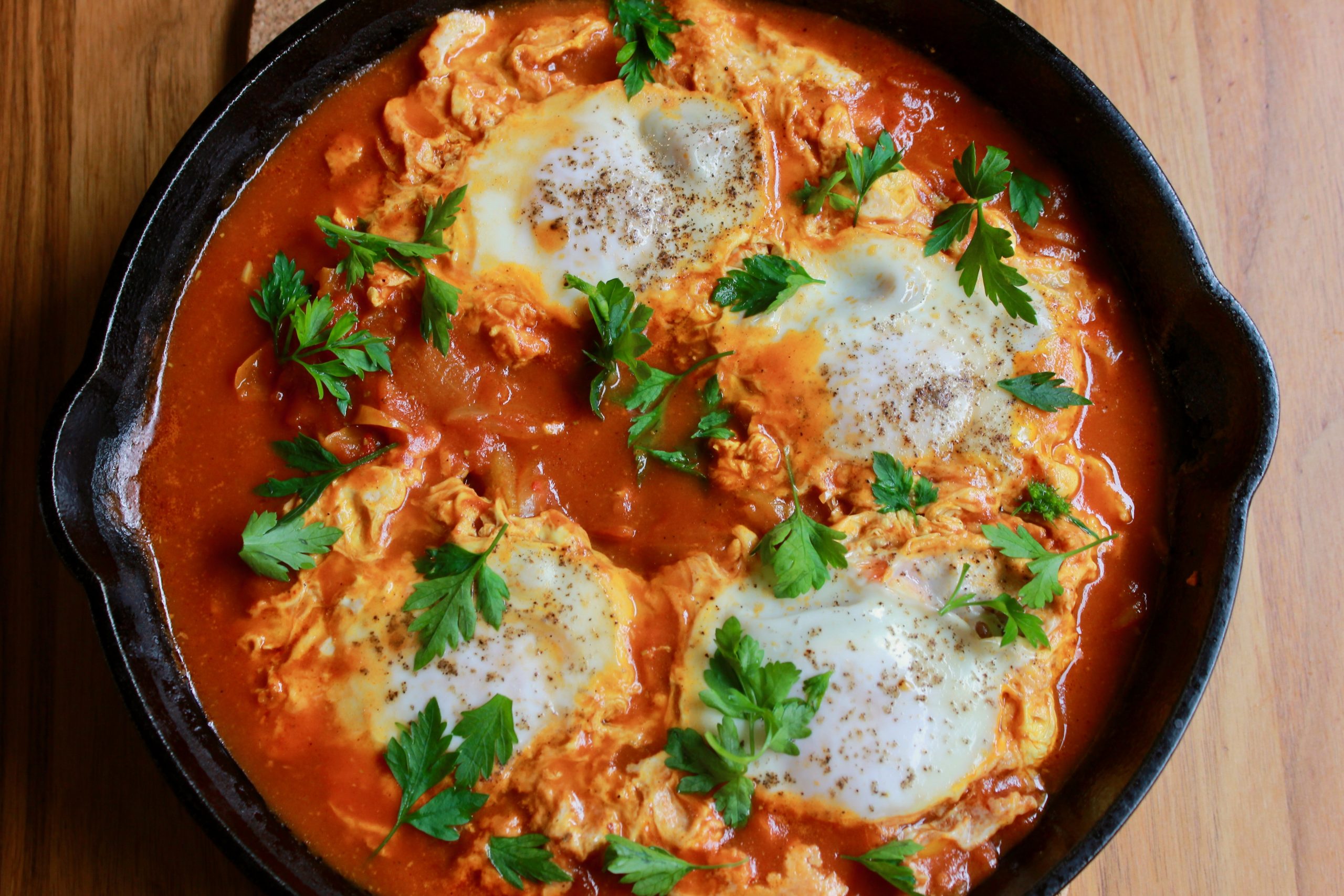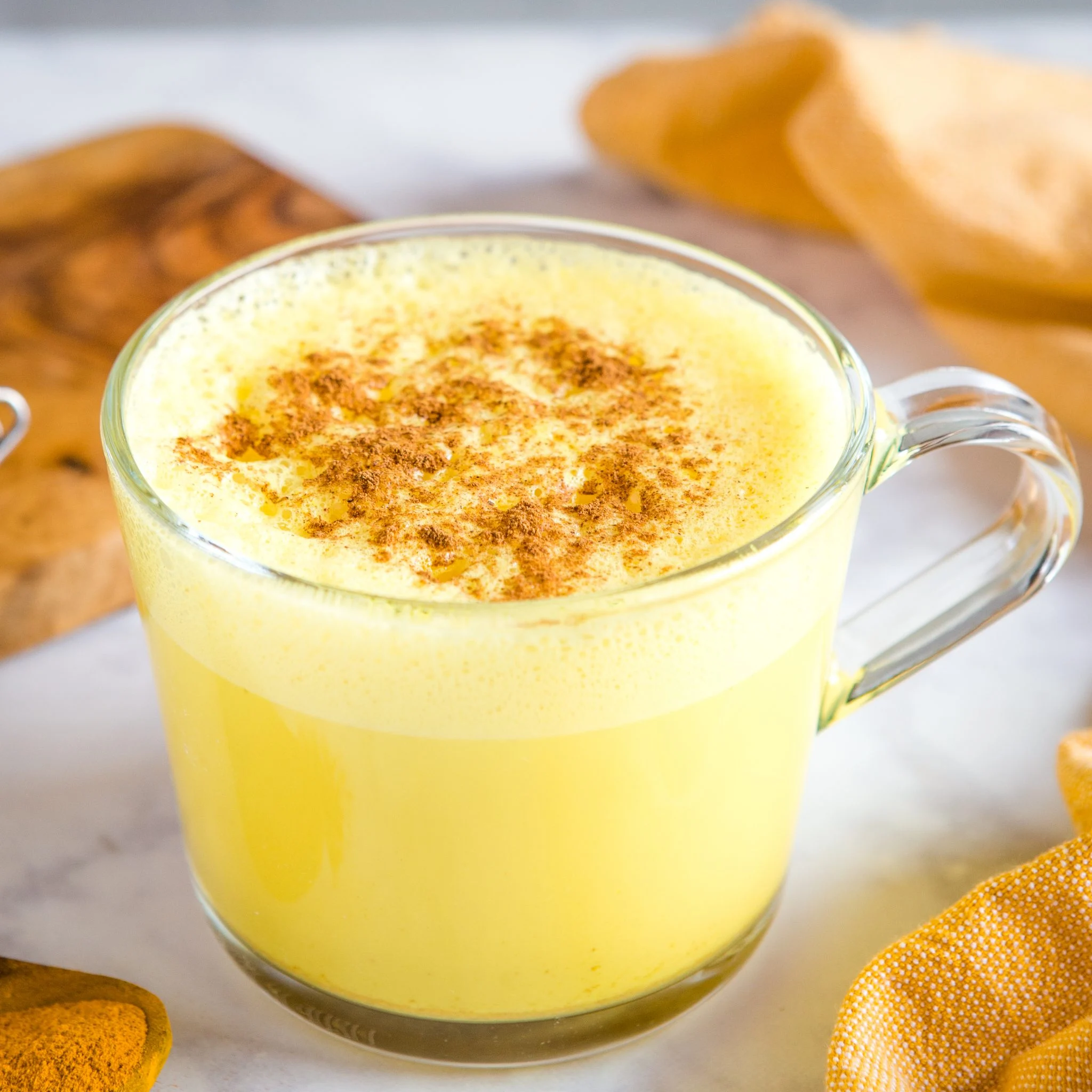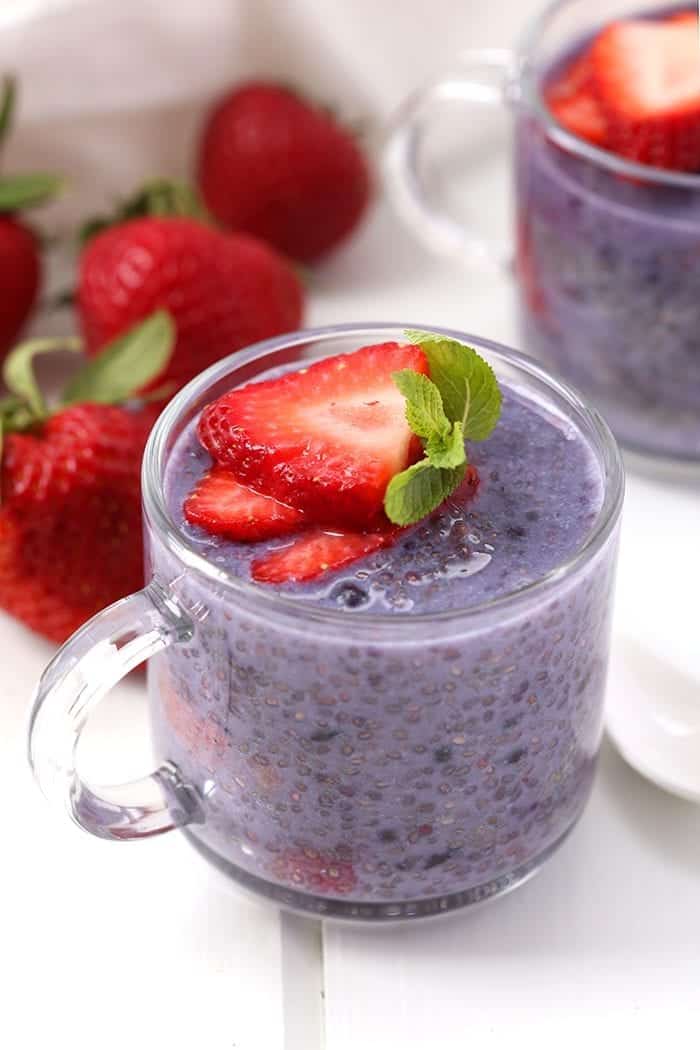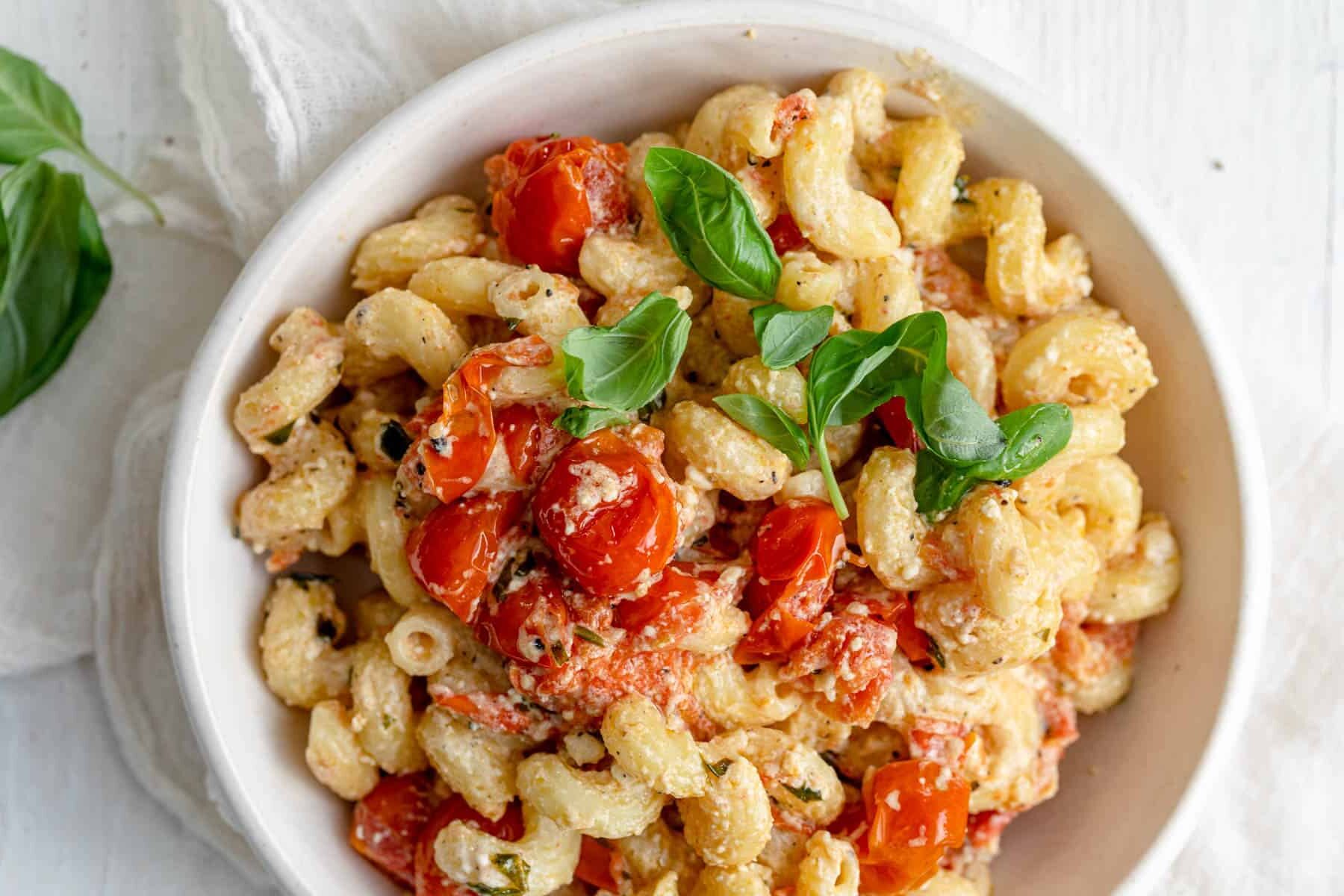Description:
Paella is a classic Spanish dish that originated in Valencia. It’s a one-pan meal, traditionally made with rice, saffron, seafood, and a variety of vegetables and meats. Paella is known for its beautiful golden hue from saffron and its rich layers of flavor. This dish is perfect for family gatherings, as it brings people together around the pan for a hearty and delicious meal. It’s typically cooked in a wide, shallow pan, but a large skillet will also work if you don’t have a traditional paella pan.
Ingredients
- 2 tbsp olive oil
- 1 onion, finely chopped
- 4 garlic cloves, minced
- 1 red bell pepper, chopped
- 1 green bell pepper, chopped
- 2 tomatoes, grated or finely chopped
- 1 1/2 cups Bomba or Arborio rice
- 1/4 tsp saffron threads (soaked in 2 tbsp warm water)
- 4 cups chicken or vegetable broth
- 1/2 lb shrimp, peeled and deveined
- 1/2 lb mussels, scrubbed and debearded
- 1/2 lb chicken thighs, boneless and skinless, cut into chunks
- 1/4 cup frozen peas
- 1 tsp smoked paprika
- Salt and pepper, to taste
- 1 lemon, cut into wedges (for serving)
- Fresh parsley, chopped (for garnish)
Instructions
- Sauté the vegetables:
Heat the olive oil in a large paella pan or skillet over medium heat. Add the chopped onion, garlic, and bell peppers. Sauté for 5-7 minutes until softened. - Cook the chicken:
Add the chicken pieces to the pan and season with salt, pepper, and smoked paprika. Sauté for 5 minutes until the chicken is browned on all sides. - Add the tomatoes and rice:
Stir in the grated tomatoes and cook for another 3 minutes. Then add the rice, stirring to coat the rice grains with the oil and tomato mixture. - Add broth and saffron:
Pour in the chicken broth, saffron threads (along with the water they were soaked in), and a pinch of salt. Bring the mixture to a boil, then reduce the heat to low. Simmer uncovered for 15 minutes, stirring occasionally. - Add seafood and peas:
Nestle the shrimp, mussels, and peas into the rice mixture. Cover the pan with a lid or foil and cook for an additional 10 minutes, or until the seafood is cooked through, the mussels have opened, and the rice is tender. Discard any mussels that do not open. - Rest and serve:
Remove the paella from heat and let it rest, covered, for 5 minutes. Garnish with fresh parsley and lemon wedges before serving.
Prep Time:
15 minutes
Cook Time:
40 minutes
Total Time:
55 minutes
Servings:
Serves 4
Nutritional Information (Per Serving)
- Calories: 480 kcal
- Protein: 33g
- Fat: 18g
- Saturated Fat: 4g
- Carbohydrates: 45g
- Fiber: 4g
- Sugar: 5g
- Sodium: 950mg
Additional Information:
Paella is more than just a dish; it’s a symbol of Spanish culture, especially in Valencia, where it originated. There are many variations of paella, including seafood, meat, and vegetarian versions. What makes paella unique is the special rice used—Bomba rice, which absorbs flavors well while maintaining its texture. A proper paella also forms a socarrat, a crispy, caramelized layer of rice at the bottom of the pan, which is considered the best part.
Diets:
This dish fits into the following dietary lifestyles:
- Mediterranean
- Gluten-Free
- Paleo (if grains are omitted, though the traditional dish is not grain-free)
- Low-Carb (depending on portion size and ingredients)
Notes:
- Rice choice: For the best texture, use Bomba rice, a traditional short-grain rice used in paella. If it’s not available, Arborio rice is a good substitute, though the cooking time may vary.
- Seafood substitution: You can substitute clams or calamari for the mussels or add chorizo for a meatier flavor profile.
- Saffron: While saffron gives paella its iconic yellow color and unique flavor, you can use a small pinch of turmeric as a budget-friendly substitute, although it won’t have the same depth of flavor.
This Traditional Spanish Paella is a hearty and flavorful dish that’s perfect for a weekend gathering or family meal. Its combination of seafood, chicken, and savory rice makes it a satisfying one-pan meal.

